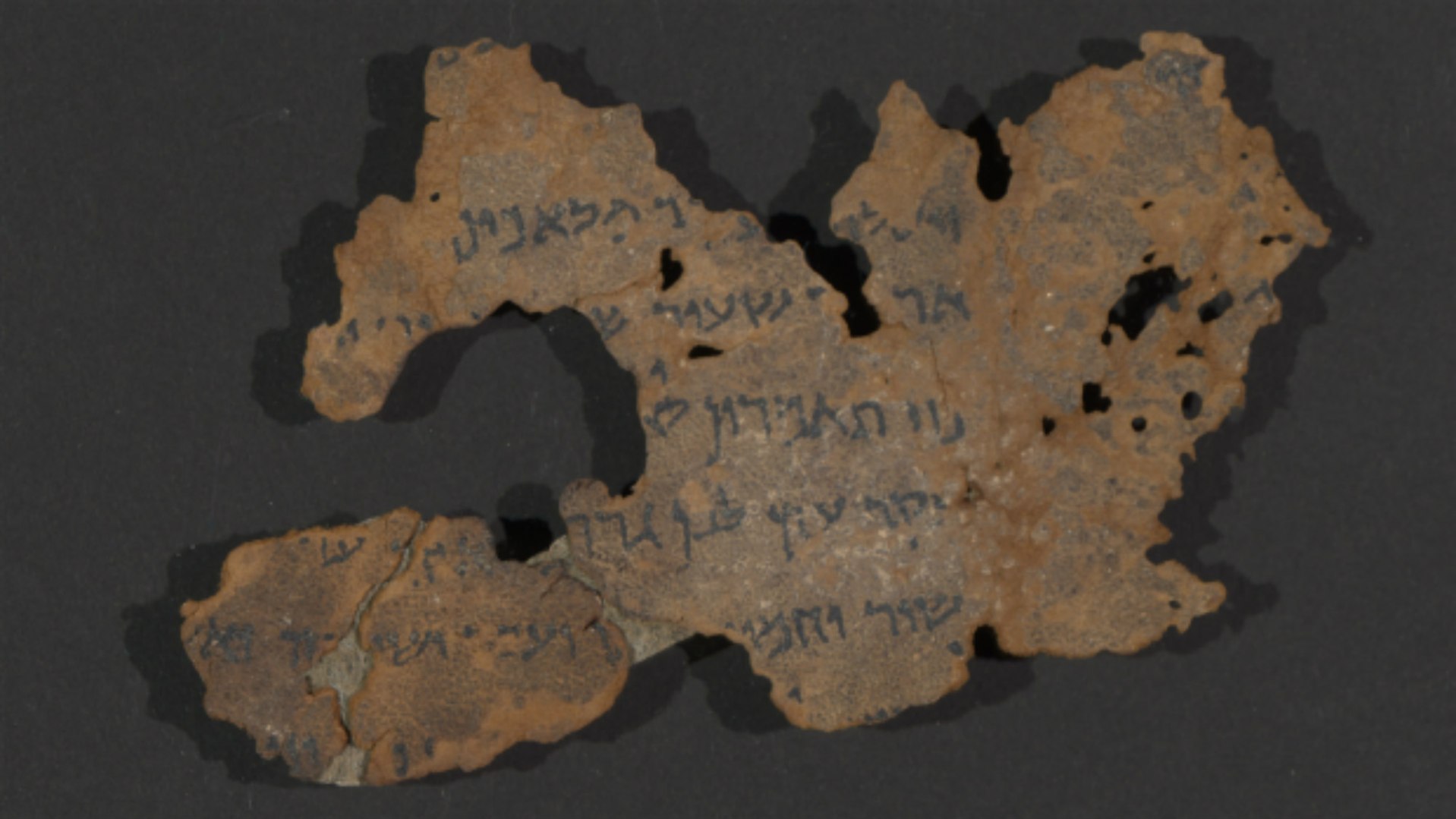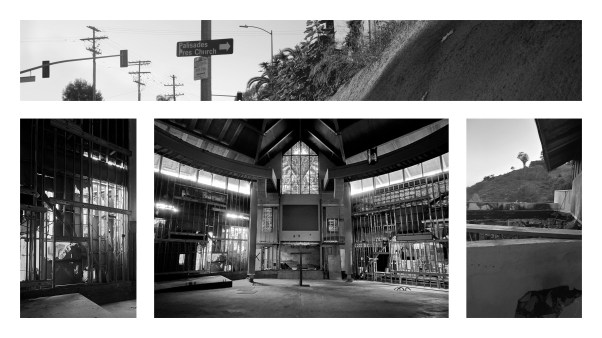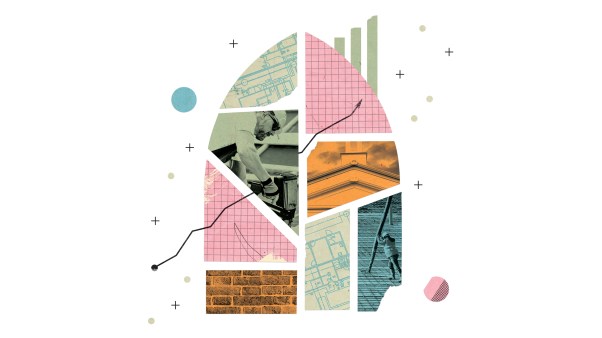The recent discovery of forged fragments of the Dead Sea Scrolls at the Museum of the Bible has called attention to the problem of faked antiquities. Evangelical collectors are thinking twice about spending money on rare bits of Bible history, fearing they could be expensive frauds, as Gordon Govier reports in the December issue of CT. But the problem is deeper than that, says George Washington University professor Christopher Rollston, an expert on ancient biblical inscriptions and the author of a forthcoming book on modern-day frauds. Forgeries corrupt what we think we know about the world of the Bible and create serious challenges for scholars trying to learn about the cultures that produced Moses, David, the prophets, and Christ’s first followers. Rollston thinks scholars have to be much more suspicious of forgeries and evangelicals should stop buying from the antiquities market.
How hard is it to forge a fragment of the Dead Sea Scrolls?
Forgers today have really become quite good. It’s not something that just anybody can do. And when just anybody attempts it, it’s painfully obvious that it’s a modern forgery and a particularly bad one.
Basically what is required is a good knowledge of the ancient language, whether that’s Hebrew, Aramaic, Greek, Latin, or Coptic; a very good knowledge of the script; and a really good knowledge of the medium as well. A forger has to know how a piece was produced, like the chemical composition of the ink and other technical aspects. But if someone knows the language quite well and knows the script and has access to a scanning electron microscope with extended depth-of-field determinations of the chemical composition of the patina and the inks, it’s not all that difficult.
Many forgers will presuppose they know more than they do about the script. I spend my life looking at script under the microscope, letter by letter. So not only do I know the angles of the strokes, I know how many strokes, the direction of the strokes, the order in which the strokes are made. Forgers will often assume they know the language so they know how the letters are made, and they really don’t.
Are most forgers in the field in some way, whether they’ve worked on excavations or have some graduate school experience?
The forgeries that we’ve seen produced in the last 40 years—the good forgeries—are definitely by people with training in the field. Forgers are people who have gone through or washed out of graduate programs. Or they’re just venal scholars—greedy scholars with no scruples. I think that’s what we have with the Dead Sea Scroll forgeries at the Museum of the Bible. These are sophisticated forgeries, and I think they’re from a senior scholar with a lot of experience.
The world of forgeries has really changed in the last 40 years. In the late 1960s a forgery appeared, for example, that we know as the Hebron Philistine documents. One scholar believed these were actually ancient pieces. Someone else said, no, this is basically a knockoff of the famous and good and ancient inscription known as the Siloam tunnel inscription.
Then about a decade later, Joseph Naveh, of the Hebrew University of Jerusalem, took a close look and said, “Look, it’s the Siloam tunnel inscription written backwards.”
I think the forger intended it basically as a joke. Even in the late 1960s and the early 1970s, forgeries were not too hard to detect. But by the mid-1970s, things had really changed, and the quality of forgeries started getting quite good.
How has the market for forgeries changed over the years?
There’s an ebb and flow, but there have always been collectors—people within Judaism and Christianity who have a deep interest in faith, the history of faith, and faith heritage—who have driven the market. Tourists to the Holy Land too. That’s driven the market for a couple hundred years.
When people are willing to pay a great deal of money, that’s the demand, and the supply ratchets up. You have more people who are willing to produce forgeries.
Inscriptions garner so much money that the motives are very strong. When you see fragments go for $125,000 each, that’s a lot of money. The ivory pomegranate was purchased by the Israel Museum for $550,000 in the ’80s. I’m told the Jehoash inscription was offered to the museum for $2 million. Venality is a big part of the equation.
The antiquities market tempts forgers, but does it also help scholars by creating an incentive for the recovery and preservation of antiquities?
There are people who make that case, but there are two problems with the market. The first is there are forgeries. The second is there are genuine antiquities that were pillaged. Whenever an inscription is pillaged from the ground, a great deal is lost.
When an inscription is excavated, we know the site from which it comes, we know the place on the site, we know the room on the building from which it comes, we know the other types of objects found in that building. We have carbon dates for some of those objects. We can draw enormous conclusions—verifiable, empirical conclusions—because we have all of that associated data. We know the context.
When something is pillaged and appears on the market, even if it’s genuine, that represents legions of information that has been lost and can never be recovered.
Do forgeries just hurt the collectors who pay lots of money for fakes, or do they also hurt biblical scholarship?
The damage that forgeries do can be enormous. It corrupts the data set we use to understand life in the biblical world.
You have people citing these forged modern inscriptions in attempts to say something about the ancient world of the Bible, the ancient languages, and the cultures of antiquity. And all this stuff—it’s not real, because it’s a forgery. But that information gets into books. It gets into articles. And once it gets that far, it’s hard to eradicate.
Forgeries dupe some very fine scholars at times. One forged inscription refers to a widow, and there have been many articles that reference that inscription, drawing conclusions about the status of women and what we can know about Judean culture on the basis of that inscription. But it’s a forgery. It’s not real data about antiquity.
When a piece from the market surfaces and it’s a probable or a certain modern forgery, based on my analysis, I debunk it rapidly. I try to get out there in a day or two at most. You have to immediately say, “This thing has some problems.” That way, people don’t publish on it, become invested in it, and commit to it, even though it might be a lost cause.
What can be done to stop the production of new forgeries?
There are laws that can be passed, cultural heritage laws. The problem is you have a law, as is the case in Israel, with various sorts of caveats and provisos, but basically, if a piece has been in a collection prior to the 1970s, then it can be sold. And that’s how the Dead Sea Scrolls forgeries were able to be purchased. They were purportedly part of the Kando family collection, and there was always lore about fragments that had been in the Kando family since they were involved in the original discovery of the Dead Sea Scrolls. So the fragments had this pedigree, and the law said they could be sold, and that’s the way these purchases were able to occur.
The very fact that they were able to occur shows you the vulnerable underbelly of the law. You can fake a pedigree. And that’s precisely what happened with these forgeries.
As far as scholarship is concerned, I have argued that when something comes from the market, we need to flag it immediately and we need to leave that flag there forever. The presupposition shouldn’t be that you have to prove inauthenticity. We need to presuppose it’s bad, flag it, and put a mark that says there’s unknown provenance so it signals to the reader forever that this is from the antiquities market. Scholars can argue that it’s authentic or probably authentic or possibly authentic.
The most important thing for scholars is just to be aware that there are some very good forgeries out there right now. The financial incentives are there for modern forgers to put the time and the work in to produce a really good forgery.










